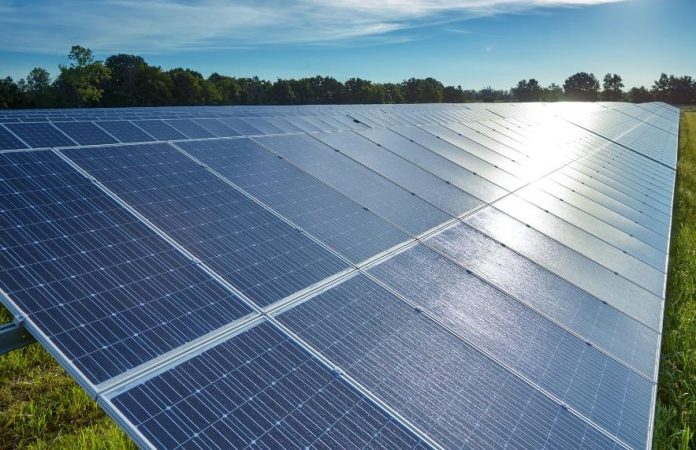Michigan utility Consumers Energy and a coalition of customer groups have agreed on a plan that will see the company exit from coal by 2025 through deploying nearly 8GW of solar PV and 550MW of battery energy storage systems (BESS) by 2040.
The plan, proposed in June last year to the Michigan Public Service Commission (MPSC) and requiring regulatory approval, provides a 20-year blueprint to meet Michigan’s energy needs while meeting the state’s climate goals.
If approved, the settlement agreement supporting Consumers Energy’s Clean Energy Plan will see nearly 8GW of solar PV added by 2040, meaning the utility will get 60% of its capacity from clean energy sources by that date.
Meanwhile, Consumers Energy has accelerated its BESS deployment targets under the plan. It is now aiming for 75MW of energy storage by 2027, achieving 550MW by 2040.
As part of its coal phase-out, Consumers Energy intends to close all three of its units at the J.H. Campbell coal plant in West Olive, Michigan in 2025 as well as two units at the D.E. Karn coal plant in 2023. The company said it will “be among the first utilities in the nation to go coal-free by 2025.”
Other measures in the plan include the purchase of natural gas facilities, such as the Covert Generating Station in Van Buren County, to be used as peaker assets to ensure “system reliability” as well as a focus on affordable energy that Consumers Energy said would help customers save an estimated US$600 million dollars through 2040 compared to the 2018 Clean Energy Plan.
“A diverse set of stakeholders came together to endorse a Clean Energy Plan that will provide reliable and affordable energy to customers for decades to come while protecting the environment,” said Garrick Rochow, president and CEO of Consumers Energy.
A coalition of customer groups, environmental organisations, MPSC staff, energy industry representatives and the Michigan Attorney General agreed on the settlement.
“Reaching consensus on this Clean Energy Plan moves Michigan toward a cleaner, more reliable energy future while caring for our co-workers and communities impacted,” Rochow said. “We’re grateful for the thoughtful, positive contributions of all stakeholders throughout this process and look forward to the MPSC’s decision on our plan.”
In November last year, Consumers Energy announced it will add 375MW of new solar PV capacity across three projects in the state as part of the Clean Energy Plan, with the utility owning and operating one plant while purchasing power from the other two.
Last month, another utility operating in Michigan, Indiana Michigan Power (I&M), issued a request for proposals (RFP) for 500MW of solar as part of its new integrated resource plan. The invitation seeks bids from developers of PV projects in Indiana and/or Michigan that should be online by the end of 2025.
Michigan utility Consumers Energy to add 8GW solar, 550MW BESS by 2040 in coal retirement plan
Renewables will comprise more than 60% of Consumers Energy’s electricity capacity by 2040.
Source:PVTECH






